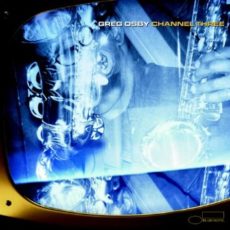
Daily Dose Of Jazz…
Greg Osby was born August 3, 1960 in St. Louis, Missouri. He majored in Jazz Studies at Howard University, then attended Berklee College of Music, studying with Andy McGhee. He played on Jack DeJohnette’s Special Edition, and has recorded with Steve Coleman, Jim Hall and Andrew Hill, thus setting the stage for Hill and Hall’s later appearance on his recording of The Invisible Hand.
He began recording under his own name in the Eighties on JMT Records, but his most celebrated work has been his run of records for the Blue Note label. Greg has followed in the footstep of many great bandleaders, discovering fresh talent and allowing players the opportunity to grow within his own band. He was responsible for giving exposure to the young pianist Jason Moran, who appeared on most of Osby’s 1990s albums including the live album Banned in New York and an experiment with adding a string quartet to the band, Symbols of Light.
Osby has contributed to the homages to Miles Davis’s 1970s electric jazz performed by Henry Kaiser and Wadada Leo Smith’s Yo Miles group and their double album Upriver. Not limiting himself to a strict jazz diet, in 2003 Osby toured North America with The Dead, a reincarnation of The Grateful Dead, and contributed in various lineups with Phil Lesh and Friends.
He has been featured in a series of magazine ads in Down Beat, JazzTimes and Saxophone Journal, and was named Playboy Magazine’s “Jazz Artist of the Year” in 2009. As an educator Greg is currently on faculty in the Ensemble Department at Berklee College of Music.
Since 1987 he has recorded nineteen albums as a leader and seven as a sideman working with Uri Caine, Steve Coleman, Robin Eubanks, Gary Thomas, CL Smooth, Joe Lovano, Stefon Harris, Jason Moran, Mark Shim, Gary Thomas, Andrew Hill, Jim Hall, Scott Colley and Teri Lynne Carrington.
Alto and soprano saxophonist Greg Osby continues to compose, record and perform mainly in the free jazz, free funk and M-Base idioms.
![]()
More Posts: saxophone
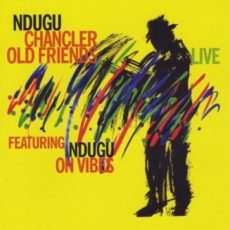
Daily Dose Of Jazz…
Leon “Ndugu” Chancler was born on July 1, 1952 in Shreveport, Louisiana. He began playing drums when he was thirteen years old and while in high school he played with Willie Bobo and the Harold Johnson Sextet.
Graduating from California State University, Dominguez Hills with a degree in music education he had already performed with the Gerald Wilson Big Band, Herbie Hancock, and recorded with Miles Davis, Fre ddie Hubbard, and Bobby Hutcherson, among many others.
Chancler often works as a studio percussionist, his playing ranging from jazz to blues to pop, including Michael Jackson’s Billie Jean, as well as Hampton Hawes, Harold Land, Azar Lawrence, Julian Priester, Lalo Schifrin, Weather Report, Stanley Clarke, Jean-Luc Ponty, Donna Summer, George Duke, Patrice Rushen, Carlos Santana, Hubert Laws, The Crusaders, Frank Sinatra, Weather Report, Lionel Richie, George Benson, The Temptations, Tina Turner, Kenny Rogers, Thelonious Monk, John Lee Hooker, Eddie Harris, and numerous others.
As an educator in 2006 he became an Adjunct Assistant Professor of Jazz Studies at the University of Southern California and teaches at the Stanford Jazz Workshop in California for three weeks every summer. He is a member of Percussive Arts Society, has been named as one of the top 25 Drummers in the world, is a composer and the sole proprietor of his own publishing company. Drummer, percussionist, studio musician, composer and producer Ndugu Chancler continues to perform, record and tour.
![]()
More Posts: drums
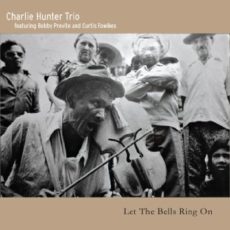
Daily Dose Of Jazz…
Charlie Hunter was born on May 23, 1967 in Rhode Island but by age four his mom packed him and his younger sister in an old yellow school bus and headed west. After several years living on a commune in Mendocino County they settled in Berkeley, California and graduating from Berkeley High School and taking lessons from guitar teacher Joe Satriani. At eighteen he moved to Paris, becoming a professional busker, working 8 to 12 hours a day to make ends meet.
Returning to the Bay area, he played a seven-string guitar and organ in Michael Franit’s political rap group, The Disposable Heroes of Hiphoprisy. Since the 1993 debut of his self-titled Charlie Hunter Trio with John Ellis on sax and Jay Lane on drums, he has recorded seventeen albums. He co-founded Garage A Trois, a jazz fusion band with Stanton Moore and Sherik, has collaborated with Bobby Previte on the ongoing project Groundtruther, and has recorded and toured with Previte’s The Coalition of the Willing.
Charlie has recorded with Christian McBride, has played in the band T.J. Kirk, that merged the music of Thelonious Monk, James Brown and Rahsaan Roland Kirk. He is an inaugural member of the Independent Music Awards judging panel to support independent artists, and over the years has performed and recorded with Erik Deutch, Tony Mason, Eric Kalb, Ben Goldberg, Ron Miles, Scott Amendola, and Curtis Fowlkes, continuing to perform, compose and tour.
![]()
More Posts: guitar
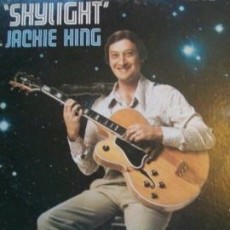
Daily Dose Of Jazz…
Jackie King was born on March 22, 1944 in San Antonio, Texas and took his first music lessons from his guitarist father, starting on mandolin and quickly switching to guitar, playing left handed. By the time he was 12, he was performing professionally around his hometown.
In the 1960s, childhood friend Doug Sahm convinced him to join him in San Francisco’s burgeoning psychedelic music scene. With saxophonist Martin Fierro, he formed the Shades of Joy, a jazz-rock fusion group that released a pair of albums, including music for the soundtrack of the cult film El Topo.
In demand as a sideman and session player, King backed Chet Baker and Sonny Stitt and recorded on albums by Merl Saunders and other artists. At the invitation of jazz guitarist and educator Howard Roberts, he joined the teaching staff of the Guitar Institute of Technology in Los Angeles, California. A year later he started his own Southwest Guitar Conservatory in San Antonio. And after seven years, he closed the school to devote more time to his performing career as a soloist and with Nelson’s band.
Jackie received an honorary master’s degree from San Francisco State University, served on the board of the Music Teachers’ Association of California, taught jazz guitar clinics, lectured at the Berklee School of Music and was featured in a series of instructional books and DVDs. He also wrote articles in Jazz Times, All About Jazz and Just Jazz Guitar.
During his career, he shared stages with such guitarists as Jerry Garcia, Stevie Ray Vaughan, Les Paul, Barney Kessel, Tal Farlow, Pat Martino, Herb Ellis and Lenny Breau. In 1999, he released the solo album “Moon Magic” and recorded an as yet unreleased album with jazz pianist Marian McPartland.
Guitarist, songwriter and educator Jackie King, who was equally at home playing jazz, rock or country music, passed away on January 27, 2016 after suffering a heart attack at his home in San Rafael, California. He was 71.
More Posts: guitar
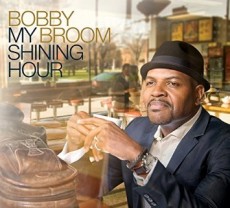
Daily Dose Of Jazz…
Bobby Broom was born Robert Broom Jr. on January 18, 1961 in New York City and began studying the guitar at age 12, taking lessons in the American Folk music style. A year later, he studied with jazz guitarist Jimmy Carter in Harlem where he took weekly lessons for the next two years.
His interest in jazz began in earnest at age 15 and as a result he began his research, study and practice of the jazz art. Broom attended the Laguardia High School of Performing Arts where he played in the jazz ensemble. He received an award for Outstanding Jazz Improvisation during his senior year.
Broom began his career while still in high school, performing at New York clubs with Charlie Parker’s pianists, Al Haig and Walter Bishop Jr. By 1977 he was playing with Sonny Rollins and Donald Byrd at Carnegie Hall. He went to Berklee School of Music in 1978, then returned to New York the next year in order to pursue his career while attending Long Island University.
At this time he began working in New York as guitarist for Art Blakey and The Jazz Messengers, Dave Grusin, Hugh Masekela and Tom Browne and landed his own recording contract with GRP Records. He earned three DownBeat Critics Poll nods from 2012 to 2014 as one of the world’s foremost jazz guitarists.
He has performed with Max Roach, Stanley Turrentine, Kenny Garrett, Miles Davis, Dr. Lonnie Smith, Charles Earland, Dr. ohn, Ron Carter, Dianne Reeves, Eon Blake, Eric Alexander, Ron Carter and Ramsey Lewis among others. He has recorded as a leader with The Deep Blue Organ Trio, The Bobby Broom Organi-Sation and his trio with Kobie Watkins and Makaya McCraven..
In the mid 1980s Broom relocated and as an educator, Broom began his work in 1982 for Jackie McLean, Director of African American Music at Studies for the Hartt School of Music at the University of Hartford. Over the years he has also been a lecturer/instructor at the American Conservatory of Music, Chicago Musical Colege-Roosevelt University, DePaul University and North Park University. He currently instructs and coaches Chicago area high school students for the Ravinia Festival Organization’s community outreach — Jazz Scholar Program, as well as the Thelonious Monk Institute.
More Posts: guitar


